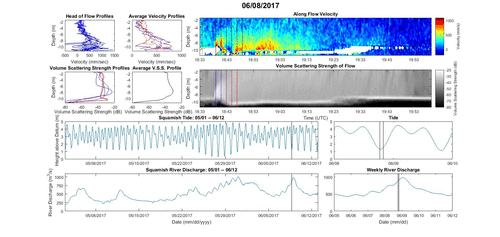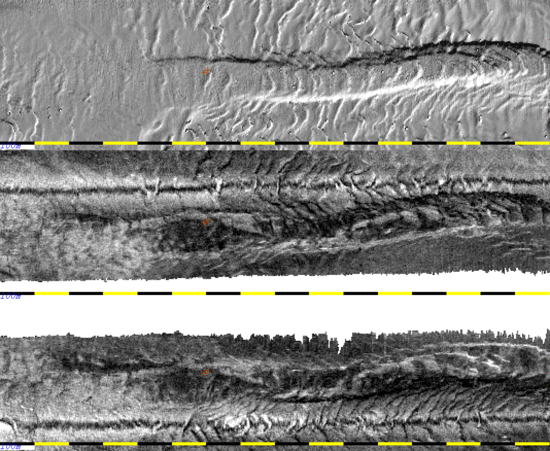Bathymetry Changes
|
bathy
before
|

|
backscatter
while
flowing
|

this is the image from the northern line that actually
captured the flow while it is in the channel.
|
Along Track Volume Scattering Sections:
The following figures represent vertical sections showing
the acoustic volume scattering directly below the vessel as
it steams along one of the three survey lines.
The data are exactly co-registered along the X axis
with the plots above.
Note that there are three tracks:
- 125m to the north of the channel axis or
- 125 to the south of the channel (that way looking at
the over bank flow), and
- directly along the axis (to look at the main channel
flow).
|
line 20:
to south
seeing
southern
spillover
|

|
line 21:
to north
seeing
northern
spillover |
 |
line 22:
along axis
(steaming
uphill)
seeing head
and
gas release
|
 |
line 23:
along axis
(steaming
downhill)
head died
continuing
gas release |
 |
line 24:
along axis
(steaming
uphill)
later
gas release |
 |
|
|

 The
JD159C event
The
JD159C event